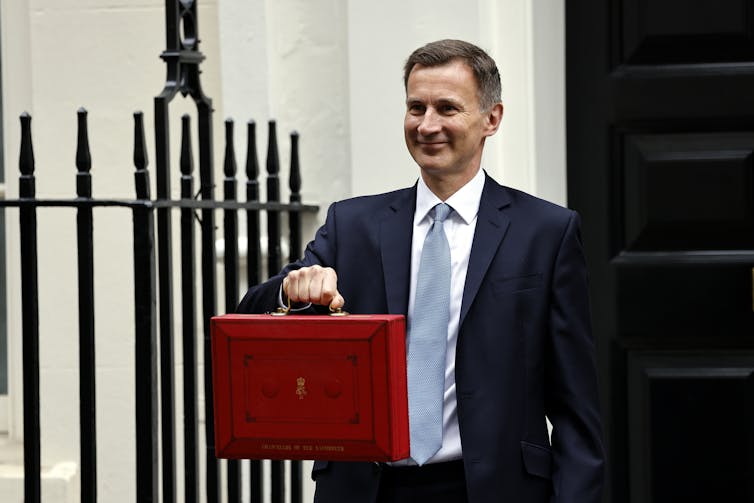
Before having our first baby last year, we wondered whether we had the money, time and necessary skills to raise a child. Perhaps you find yourself contemplating the same? Many people certainly have, as birth rates have been declining across the world for the past 200 years.
Research attributes this trend to the escalating demand for these three resources. Since the 1970s, economists have argued that the increasing need for money, time and skills is rooted in the belief that all three resources are crucial investments in a child’s education, or “human capital”, preparing them for a successful and self-determined life.
Economic historians ascribe this growing demand for human capital to the transition from an agricultural economy to a highly skilled manufacturing and services-based economy, first in western societies and then globally. Empirical evidence supports the idea that this transition has caused birth rates to slow down. For instance, analysis of individual returns from the 1911 Irish census suggest that a child remaining in school between the ages of 14 and 16 caused an up to 27% reduction in fertility.
Should I have children? The pieces in this series will help you answer this tough question – exploring fertility, climate change, the cost of living and social pressure.
We’ll keep the discussion going at a live event in London on November 30. Click here for more information and tickets.
An expensive business
Parenting has become more expensive and time-consuming. In its annual cost of a child report, the Child Poverty Action Group – a charity that works to alleviate poverty and social exclusion – estimated the cost of raising a child in the UK until the age of 18 in 2022 at £150,000 for couples and over £200,000 for single parents. In 2021, the cost of bringing up a child stood at £194,000 for a single parent.
One of the biggest expenses tied to parenthood is the cost of childcare for babies and toddlers. The same report concluded that childcare now constitutes around 60% of the overall cost of raising a child in the UK, up from 40% in 2012.
The high cost of childcare is partly due to the high ratio of staff to children that is required in UK childcare settings. But it is also higher than in many other countries because the government provides fewer subsidies.

International variation
How much you can expect to pay for childcare varies significantly across countries. In part, this depends on whether the government considers childcare and early education as a private issue or a public concern.
In 2022, the OECD (a forum of 38 mainly high-income countries) estimated that net childcare costs in the UK range from 5% to 25% of the average income (depending on wage estimates). Childcare costs can even make up over 50% of women’s income. The UK is a country in which childcare and education is seen predominantly as a private problem.
In contrast, Sweden’s childcare costs range from 3% to 5% of average income, and Germany’s constitute just 1%. Both of these countries see childcare and education largely as a public issue.
Child benefits, tax privileges for parents, and parental leave policies and compensation rates also vary significantly across EU and OECD countries, as does total public spending per child and age group.
Supporting parents
Contributions to a child’s human capital, whether through child benefits, tax credits, nursery vouchers, schooling hours or university education, have become policy in most developed countries. However, the specifics of this contribution differ widely, and the UK is not currently at the forefront.
But change seems to be on the way. As part of the UK government’s 2023 spring budget, chancellor Jeremy Hunt announced a raft of changes to childcare support. This includes providing 30 hours of free childcare per week (phased in from April 2024 until September 2025) for children from nine months old and with working parents. This arrangement already exists for three- to four-year-olds (the age at which most children begin school).
However, it remains to be seen whether the process of making subsidies available for the youngest age group will actually lower the overall cost of childcare. Parents will still have to pay for any care above 30 hours. Demand for childcare and, consequently, fees may well also increase as a result of the subsidies if the supply of childcare does not keep pace.

Bank on your relatives, or stay at home?
Research has investigated the role of informal networks, and to what degree they can reduce the costs of having a child. These networks could include your friends or relatives providing childcare.
However, while informal support networks may reduce the costs of child rearing, they can be fragile. The needs of your friends or relatives can change, hindering their ability to provide free (or cheap) childcare.
Another key determinant of the cost of a child is to what extent parents reduce their working hours. Research, which was published in April 2023, analysed childrens’ test scores to gauge whether a child benefits more from the income their mother brings home by working longer hours during their childrens’ preschool years, or loses more through the fewer hours spent together. The findings suggest that the increased income from working longer hours had an altogether positive effect.
So, money clearly does help. But the problem lies in the fact that having a child now means you need more of it than you used to. How much this comes from your own pocket is a crucial question for the future.
The authors do not work for, consult, own shares in or receive funding from any company or organisation that would benefit from this article, and have disclosed no relevant affiliations beyond their academic appointment.
This article was originally published on The Conversation. Read the original article.







